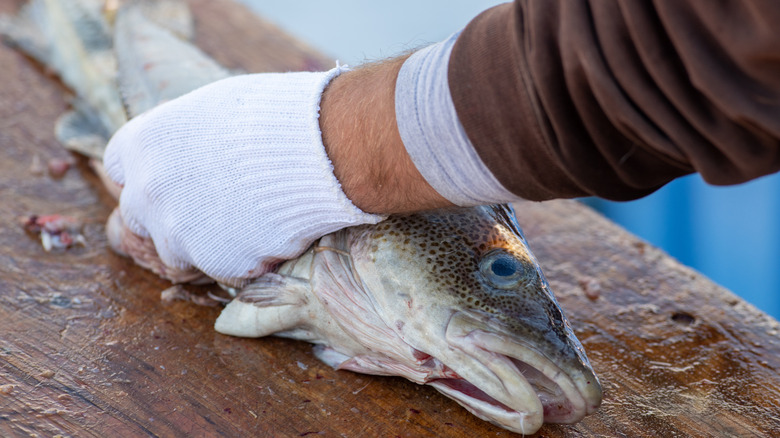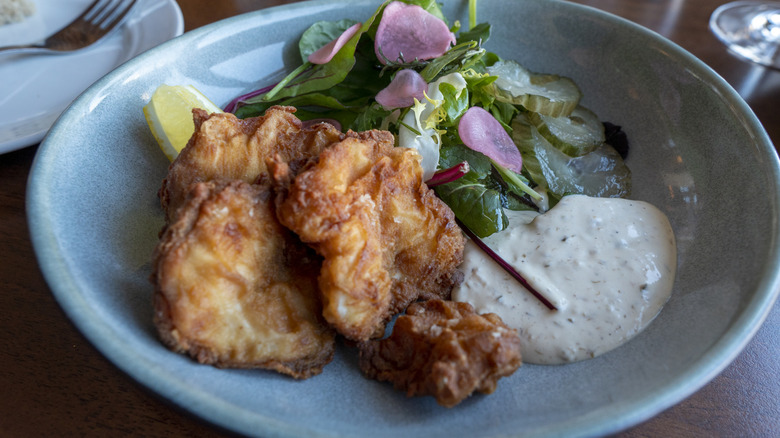The Cut Of Fish That's Often Thrown Out But Is A Delicacy In Newfoundland, Canada
In the culinary world, there are thousands of regional eats specific to one part of any given country, state, city, or even neighborhood. Consider, for example, regional hot dog styles you've probably never heard of, or the many distinct regional cuisines of Mexico. Here's one you might never have heard of: cod tongue, a delicacy that hails from Newfoundland, Canada, and which isn't quite as intimidating as it sounds. After all, according to Kyle Taylor, chef and founder of HE COOKS®, "Cod tongue isn't actually the tongue. It's a muscle from the throat of the fish, and it's incredibly delicious."
Newfoundland has a storied history with cod fishing, starting in the late 15th century; however, once industrialization was introduced, cod levels dipped to critically low numbers, and the Canadian government placed a moratorium on this type of fishing in 1992. It was lifted in 2024, so once again Newfoundlanders and tourists to the area can enjoy locally fished cod tongue.
"It's soft, rich, and slightly chewy — almost like a scallop," Taylor said. But, he noted, outside of Newfoundland it typically gets discarded, despite how tasty it is. "This part of the fish, the 'tongue,' has more connective tissue than a fillet, contributing to a chewy, densely flavored experience."
The traditional way to cook cod tongue
In terms of how cod tongues might be cooked, Kyle Taylor says the "texture lends itself to pan-frying, very similar to that of a scallop." The roughly triangular piece of fish flesh can be dredged in flour and seasoned however you like; salt and pepper is the traditional preparation, but you can make them your own by adding spices like paprika, garlic and onion powder, or even a pre-made seasoning mix. Then you'll just fry them up in a pan with oil and butter — or pork fat, as is traditional — letting each side brown.
One way cod tongues differ from scallops — which makes them even easier to cook — is that "a cod tongue is more forgiving to being [over-cooked] and absorbs flavors better," Taylor told us. So you don't have to worry about flipping them or taking them off the heat at a precise moment (and ensuring they're cooked all the way through is essential to avoiding cod worms). You can also deep-fry them if you want the exterior to be even crispier. However you choose to cook them, though, the inside provides a delightful contrast by remaining soft and chewy.


